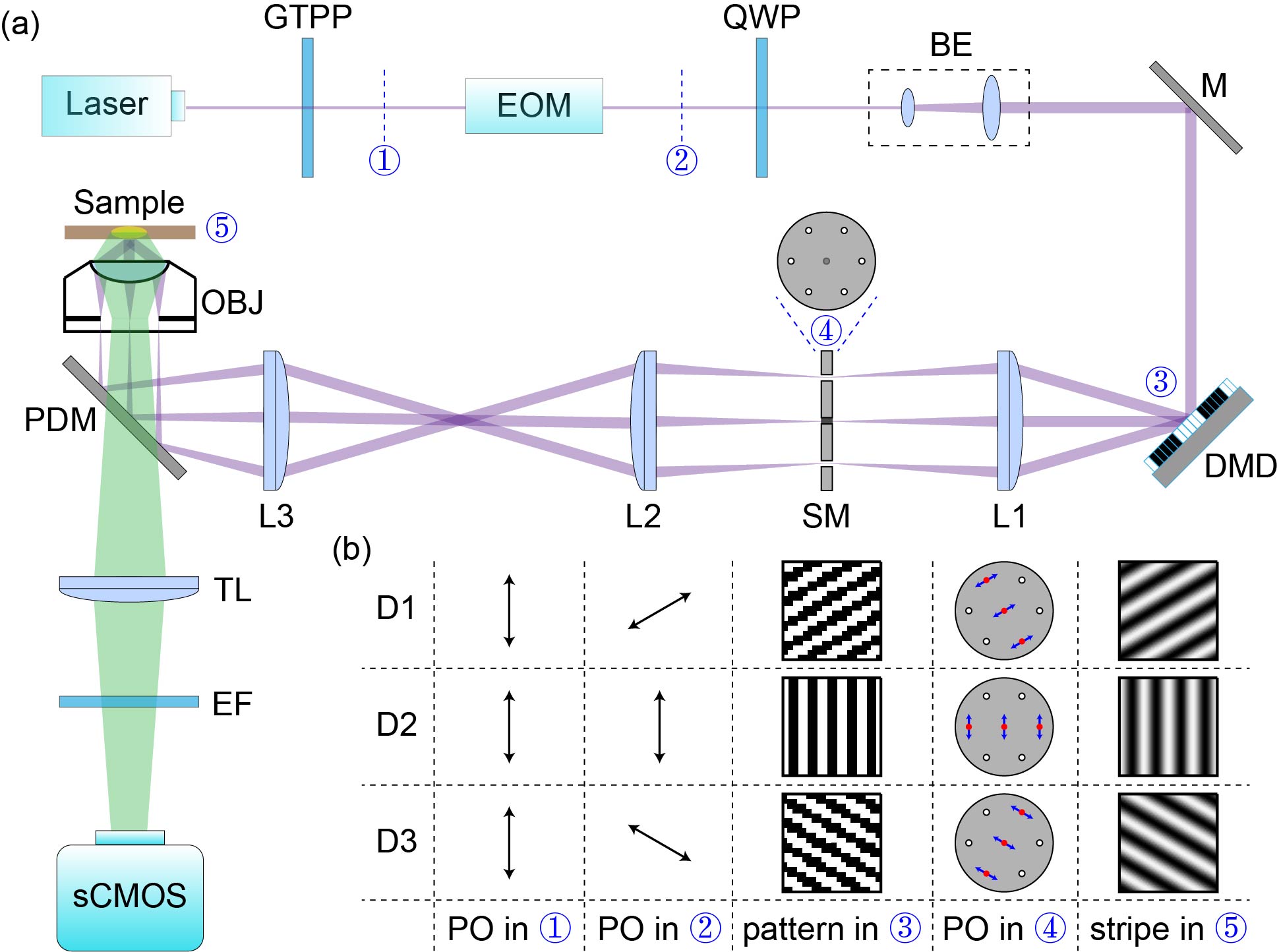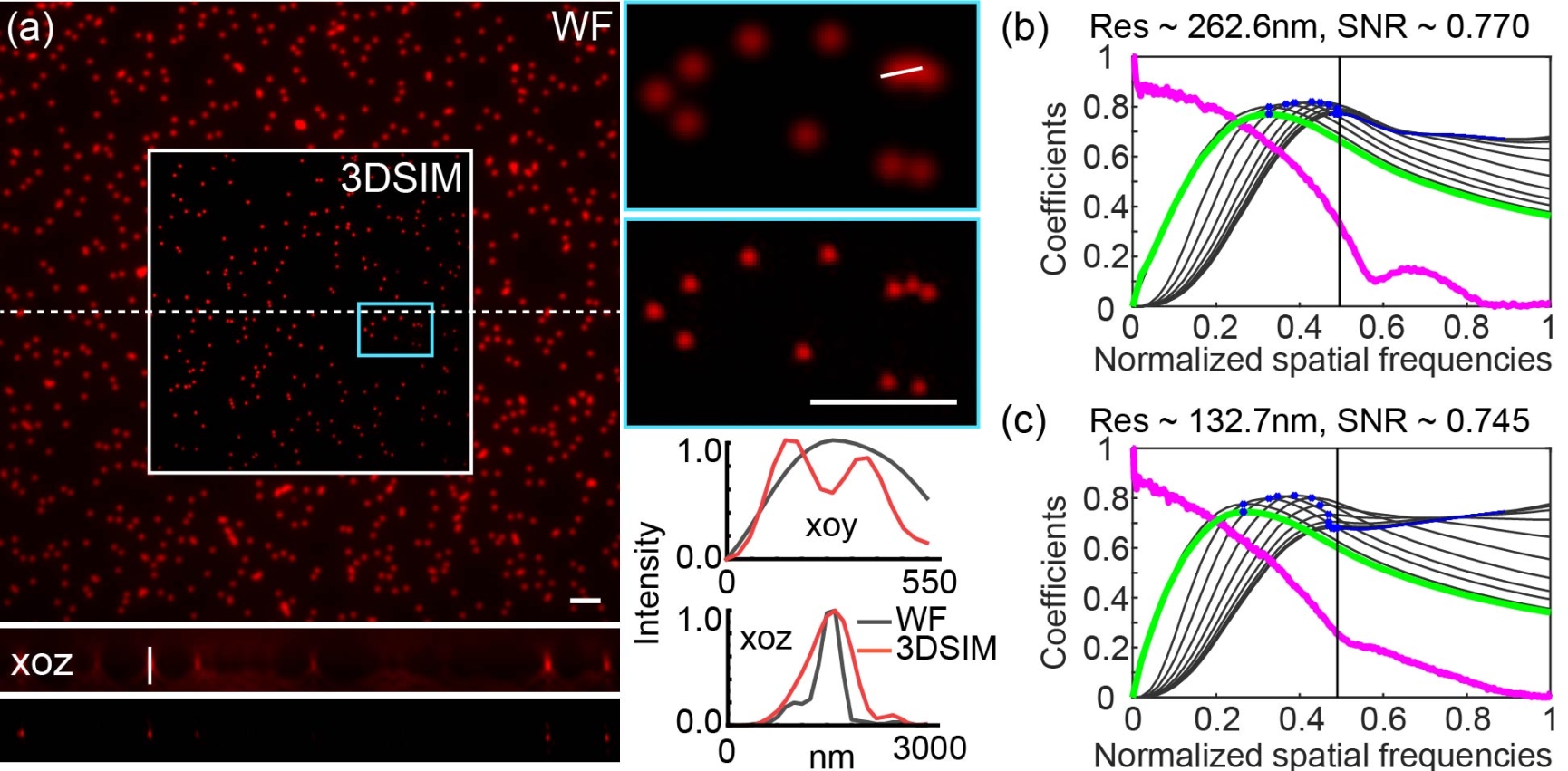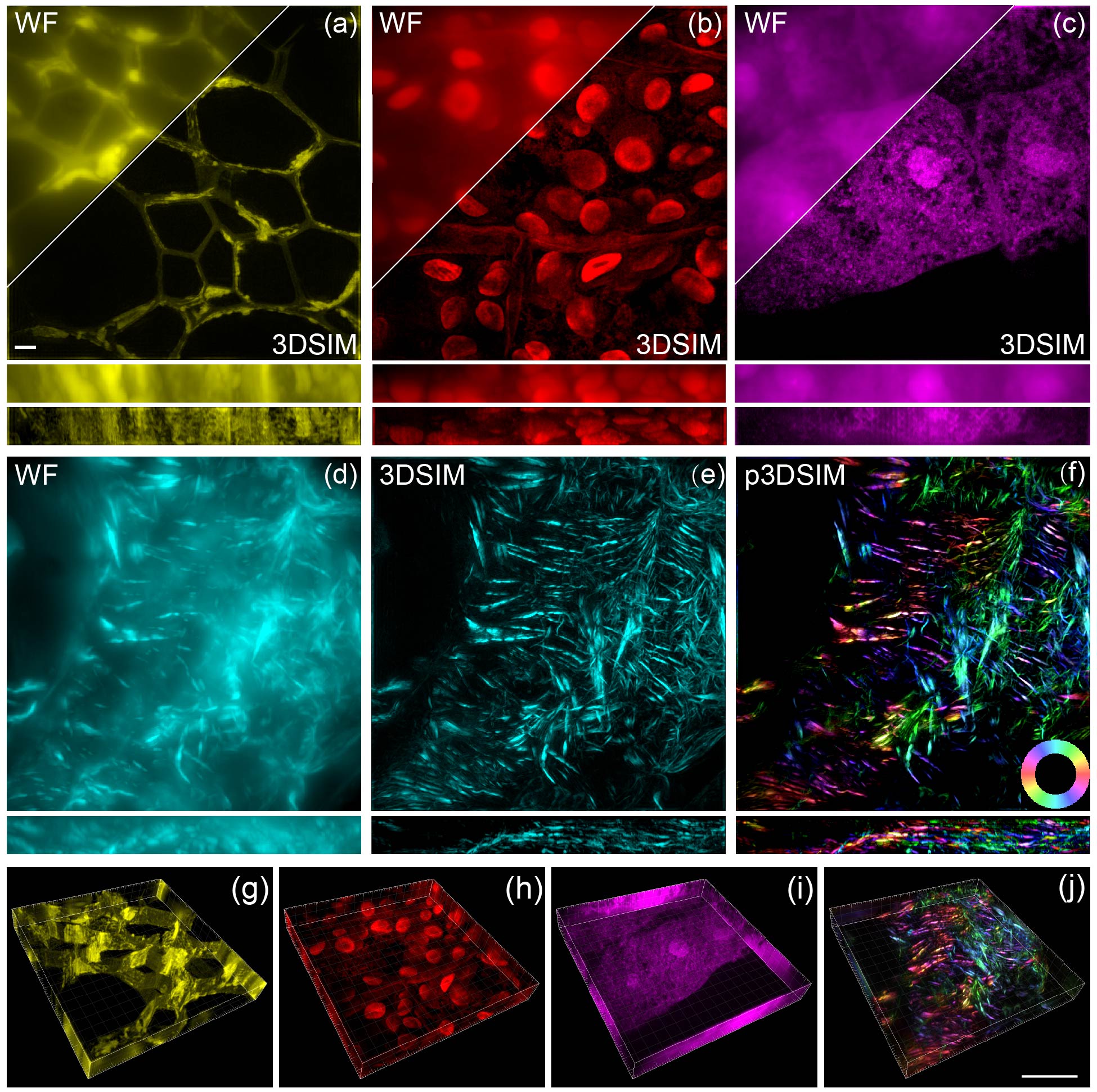High-speed autopolarization synchronization modulation three-dimensional structured illumination microscopy
Information source:: Professor Xi Peng’s team
DMD, a digital light processing (DLP) device, is widely used in projectors and other devices. It is capable of providing high-speed pattern modulation, which brings technological innovation to the display industry.
Among various super-resolution fluorescence microimaging techniques, structured illumination microimaging can maintain low phototoxicity and high temporal resolution at two times the diffraction-limit resolution, which has become the mainstream method for live cell observation. Conventional 3DSIM imaging systems modulate the direction, phase, and polarization state of the illuminated structured light by means of phase gratings and line polarizers, or ferroelectric liquid crystal spatial light modulators (FLC-SLMs) and zoned half-wave slices. However, the phase grating-based 3DSIM system requires mechanical translations and rotations in imaging, which greatly limits the imaging speed of 3DSIM, while the FLC-SLM-based 3DSIM system requires two liquid crystal phase delayers for synchronized phase delays, which is costly and still limits the modulation speed. Considering that 3DSIM needs more original images to reconstruct super-resolution images than 2DSIM, the limited switching speed and polarization modulation accuracy of its hardware system will bring various kinds of artifacts due to the sample motion and insufficient stripe modulation system.
To address the above problems, Prof. Peng XI's team at Peking University's School of Future Technology, following the successful realization of laser interference-based DMD-SIM in 2020 (APL 2020) and the open source 3DSIM reconstruction algorithm Open-3DSIM in 2023 (Nature Methods 2023), proposed for the first time a high-speed, self-polarization modulation method for 3D structured light-apparent micro-imaging (DMD-3DSIM), which is based on digital micromirror devices (DMD) and electro-optical modulators (EOMs) for high-speed, self-polarization modulation of 3D structured light-illuminated apparent microimaging (DMD-3DSIM). The method combines the bias-preserving and fast switching characteristics of DMD with the fast polarization rotation characteristics of EOM to achieve high-speed 3DSIM imaging of various subcellular structures and plant and animal tissues. The precise polarization modulation system has the ability of dipole orientation resolution, and various types of anti-convolution algorithms further improve the computational resolution of 3DSIM. The results are published online under the title of "High-speed auto-polarization synchronization modulation three-dimensional structured illumination microscopy".
The optical path of DMD-3DSIM is shown in Fig. 1, where the laser passes through a polarizing prism and is polarization-modulated by an EOM and a quarter-wave wavelength; the outgoing light is collimated by a beam expander, and illuminated at the center of the DMD with an incidence angle of 12°; the DMD is loaded with dichroic fringes of a specific period, and the multistage diffracted beams are converged by the lens L1; the spatial filters screen out the diffracted light in the 0th and ±1st stages; the diffracted beams of the 0th and ±1st stages are re-combined into the back focal plane of the objective lens by the 4f system with the dichroic mirrors and are caused to interfere with the surface of the samples; and the fluorescence generated by the samples is collected by the camera through the mirror-barrel lenses and the emission filters.

Fig. 1 Schematic diagram of the DMD-3DSIM hardware. (a) Optical path setup. (b) Schematic of the polarization direction and structured light in different parts of the optical path.
The researchers first imaged fluorescent spheres with a diameter of 100 nm using DMD-3DSIM and compared the wide-field image (WF) with the three-dimensional structured light-illuminated apparent microimage (3DSIM), as shown in Fig. 2(a). 3DSIM successfully resolved adjacent fluorescent spheres that were indistinguishable from the WF, and at the same time improved the optical lamination capability and axial resolution. The image de-correlation results show that 3DSIM achieves a 2-fold resolution improvement in both lateral and axial directions.

Fig.2 DMD-3DSIM resolution determination. (a) WF and 3DSIM images of 100 nm diameter fluorescent spheres. (b-c) De-correlation quantitative fractional exact resolution.
The researchers further imaged plant and animal tissues with strong background scattering and some thickness. Figure 3 shows the WF and 3DSIM results of oleander leaves, black algae leaves and corn root tips, respectively, as well as the dipole orientation distribution results of actin microfilaments in mouse kidney tissue sections (p3DSIM). The improved resolution with optical lamination capability further demonstrates the advantages of DMD-3DSIM over WF imaging.

Fig.3 DMD-3DSIM imaging of plant and animal tissues. (a) Oleander leaf cell wall. (b) Hollow structure of black algae leaf blade. (c) Periodic aggregation and dispersion structure of corn root tip. (d-f) WF, 3DSIM and p3DSIM maximum intensity projection images of actin microfilaments in mouse kidney tissue sections. (g-h) Corresponding 3D presentations. 37 layers. Scale bar: 2 μm.
Given the wide range of applications of DMD's related technology in digital light processing and its cost-effectiveness as a consumer product, the researchers in this study have made all the hardware components and control programs publicly available in the paper's appendix as well as on Github: https://github.com/Cao-ruijie/DMD-3DSIM-hardware, making this technology open-source hardware. Combined with the team's Open-3DSIM algorithmic platform published in Nature Methods (https://www.nature.com/articles/s41592-023-01958-0), the researchers expect that this work will open up a new avenue for synergistic software-hardware development for 3DSIM multidimensional imaging.
In this work, Yaning Li and Ruijie Cao, PhD students at Peking University's School of Future Technology, are the co-first authors, and Prof. Peng XI and Maggie Li of Peking University are the co-corresponding authors. This research was supported by the National Key Research and Development Program of China and the National Natural Science Foundation of China.
Original link: http://dx.doi.org/10.1117/1.APN.3.1.016001




